First Presence - Christ Church
A collaboration of Swanton Falls Congregationalists, Methodists, Episcopalians, and Quakers begun in 1822 resulted in the building of a Meeting House [now Swanton Christian Church] in 1824; each would share equal rights to the pulpit. The Society of Episcopalians chose the name Christ Church with the Reverend Joseph H. Covell as rector. They held services there occasionally 1824-1826, and the Right Reverend John Henry Hopkins, Sr. (the first Episcopal bishop of Vermont) visited once or twice a year. In 1827, the Congregational Church purchased the Episcopal Meeting House rights. The Rev. Anson B. Hard became rector in 1832, but he departed in 1834 and Christ Church was dissolved. |
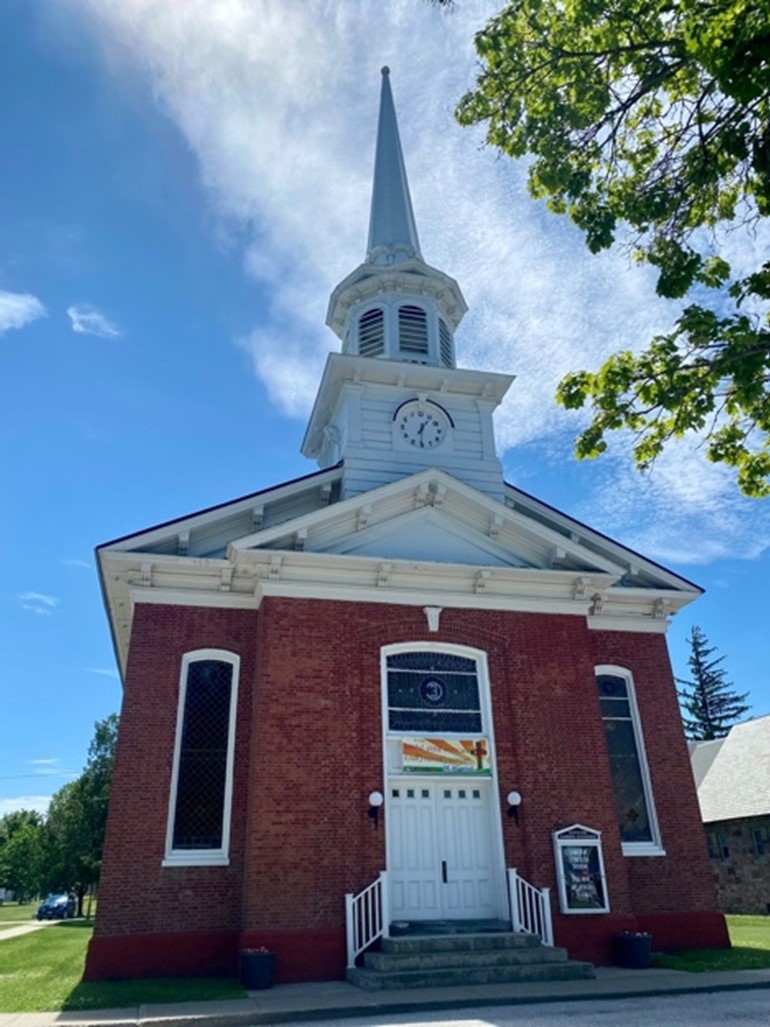 |
Holy Trinity Church Established - The Stone Era
Holy Trinity Episcopal Church of Swanton, Vermont, was established in 1867 with Olive Barker (Sawyer) Stone as its primary benefactor and visionary. She was a member of St. John's Episcopal Church in Highgate Falls, where her children were baptized, a five-mile ride by horse and buggy. However, she desired and instigated a mission in Swanton where she lived with her husband Henry and their children. The Rev. J. B. Pitman became rector of St. John's, which now included the establishment of a mission at Swanton Falls. Beginning Sunday, August 4, 1867, morning services were held in Highgate Falls and evening services at 2:00 in Swanton Falls at the Academy Hall [now the town clerk's office]. |
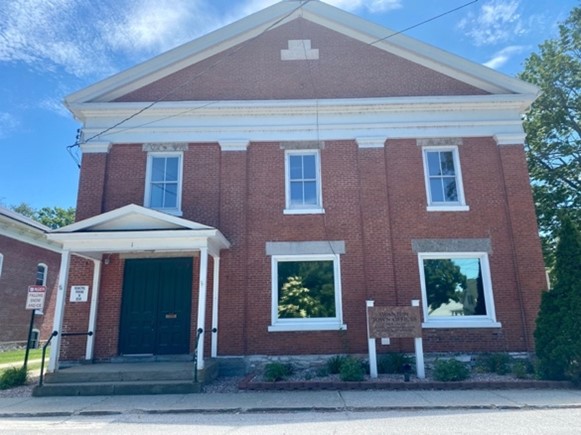 |
Bishop Hopkins presided over confirmations in Plattsburgh, where he contracted pneumonia, and died on January 9, 1868. In June the Rt. Rev. W. H. A. Bissell was elected, ordained and consecrated Episcopal Bishop of Vermont. On July 5th 1868, Bishop Bissell celebrated what is believed to have been the first Episcopal Holy Communion in Swanton, after confirmation of eighteen adults and three teenagers in the Methodist Meeting Hall [now Memorial United Methodist]. When the railroads to Canada reached Swanton, the parish grew more quickly than the one in Highgate Falls, and it was decided that Pitman should reside in Swanton. A house for the rectory at 40 Grand Avenue with the land at 38 Grand Avenue were purchased from George and Mary Blake. On May 1, 1869 Pitman and his family moved in, but seven years later the house was sold, so that a church could be built on the corner. |
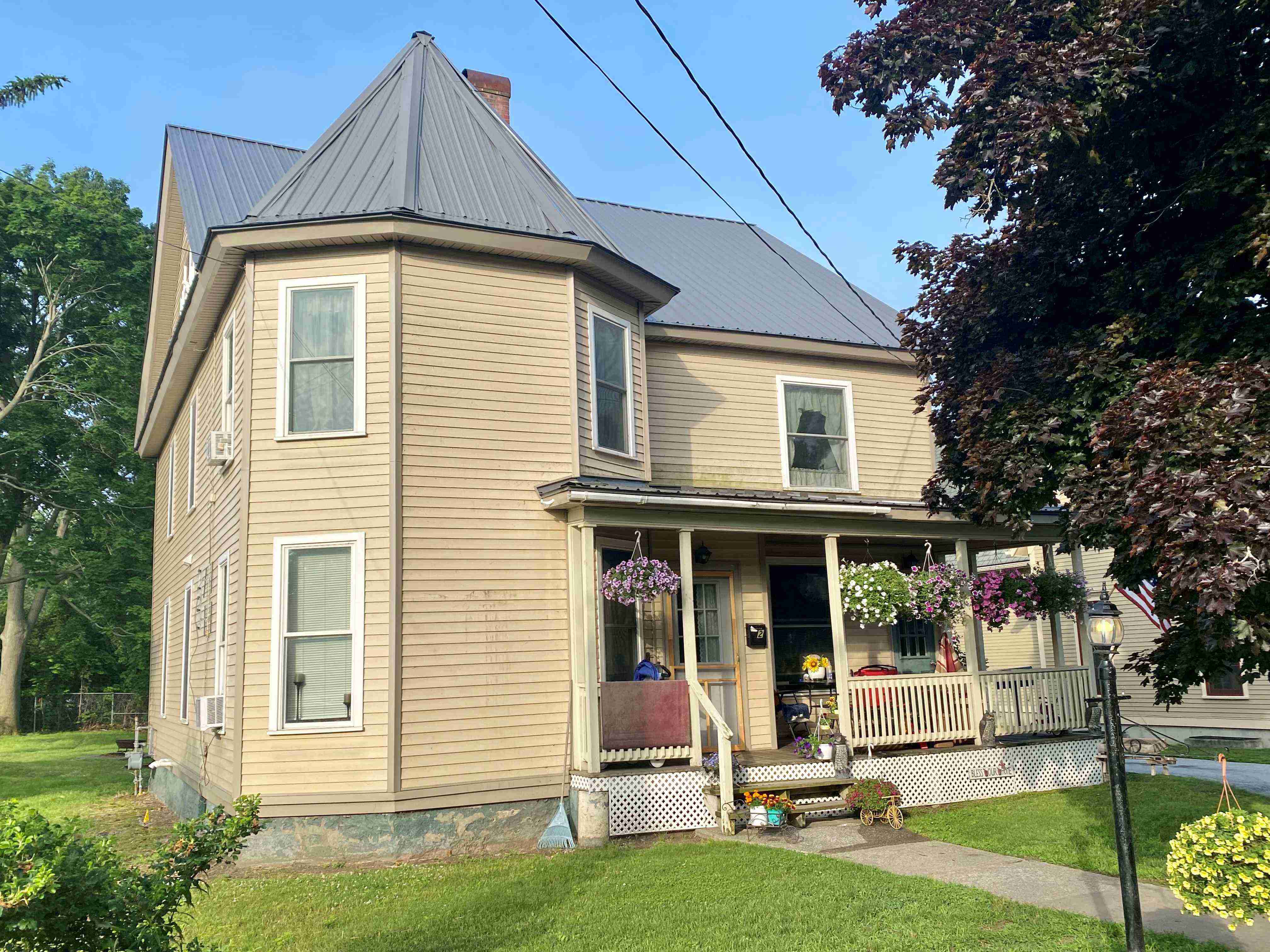 |
A wooden church seating 150 people was erected in 1876 for less than $2,000. Pitman resigned, followed by several interim rectors until September 9, 1888, when the Rev. Josiah Swett, D. D. became rector and the church was consecrated by Bishop Bissel. |
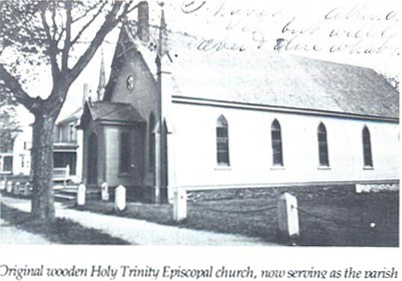 |
In 1895 as a memorial to their daughter Emily, Henry and Olive built a rectory at 46 First Street. Three of their sons entered the priesthood, and their second son, Edward Sawyer Stone, became rector of Holy Trinity in 1905. Henry M. Stone died August 16, 1908. |
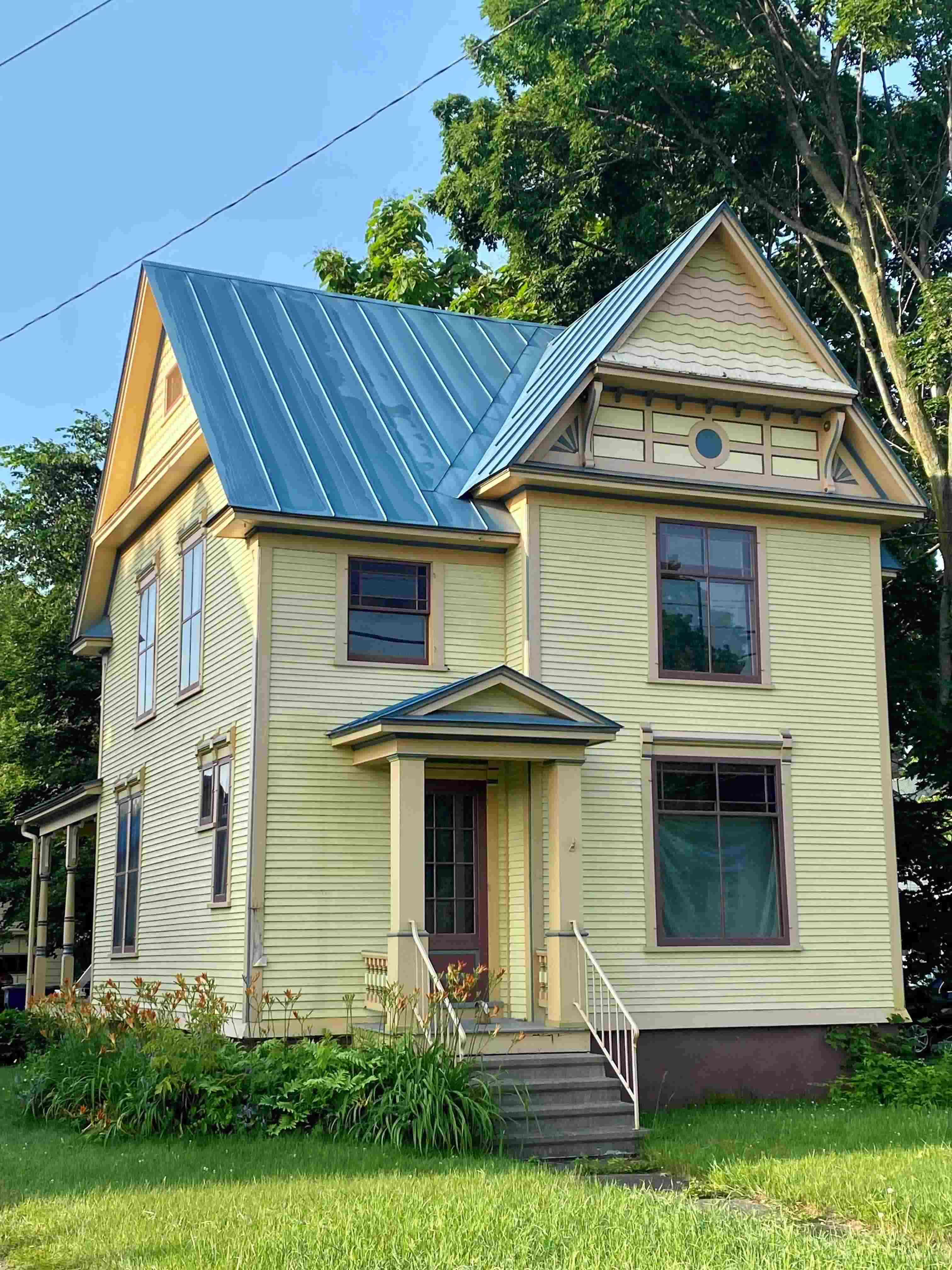 |
The Stone family designed, financed, and had constructed the current church in English Gothic style with rough-cut Swanton Red marble. The cornerstone was laid on September 22, 1909 and dedicated "To the Glory of God in Memory of Henry M. and Olive B. Stone A.D. 1909". The church was consecrated by the Rt. Rev. Addison C. A. Hall on May 26, 1910, the Thursday following Trinity Sunday. Olive Barker Stone, benefactor for the establishment of Holy Trinity - including construction and furnishing of both the original church and the current one - died November 2, 1913. In 1915 James Monroe Bell presented a pipe organ built by Hall & Sons, Boston, in memory of his wife, Eva M. (Laselle) Bell. |
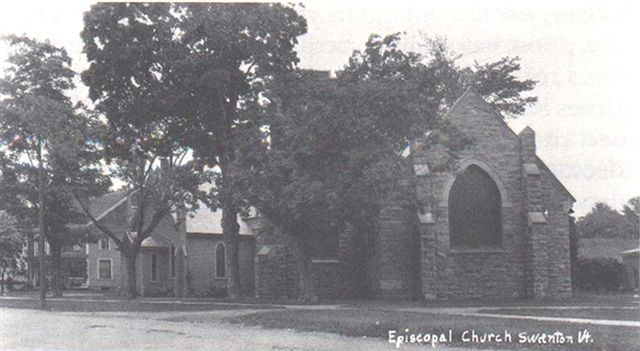 |
Natural light enters the nave and chancel through 17 leaded stained glass memorial windows, depicting Old and New Testament themes. The lower side walls of the church are finished in cypress and Georgia pine stained a dark brown shade. A wall of plaster, painted a buff color, extends from the wainscoting to the ceiling. Separating the chancel and nave is a rood beam, surmounted by a crucifix, and the figures of the Blessed Virgin on one side and St. John on the other. The altar of white Vermont marble incorporates three delicate Della Robbia inserts. The organ is surmounted on the wall behind the altar over a triptych depicting Christ in Glory surrounded by adoring angels. |
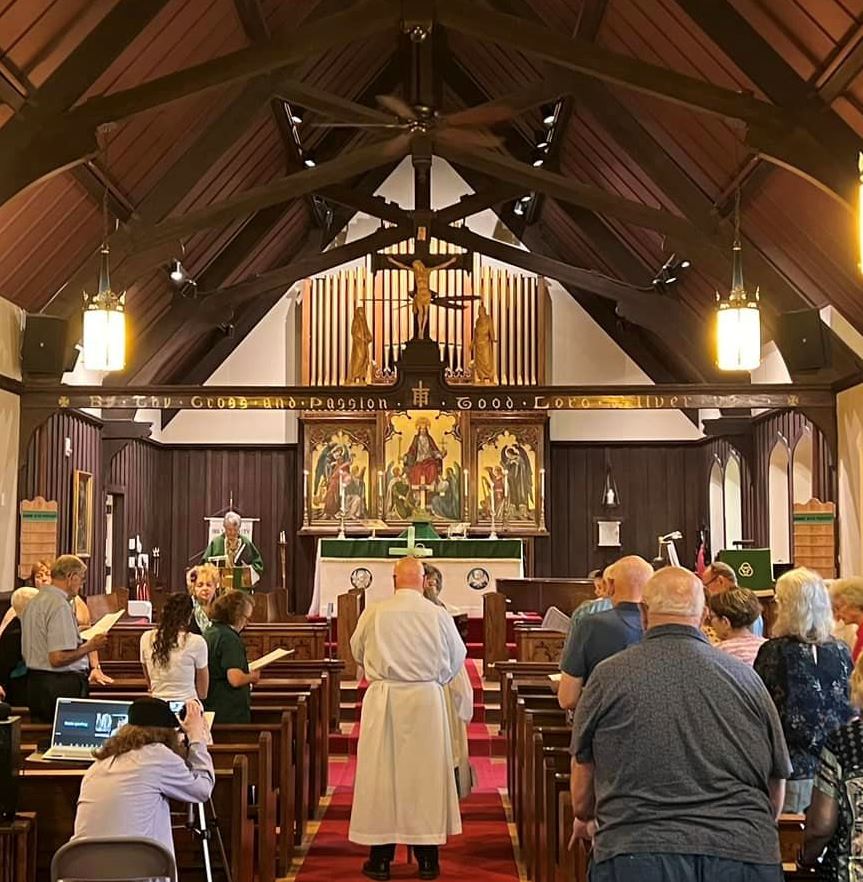 |
The Rev. Edward Sawyer Stone contracted tuberculosis, resigned in September 1923, and died October 1927. Multiple rectors served the dwindling congregation over the next 40 years, but a core group of dedicated families persisted. |
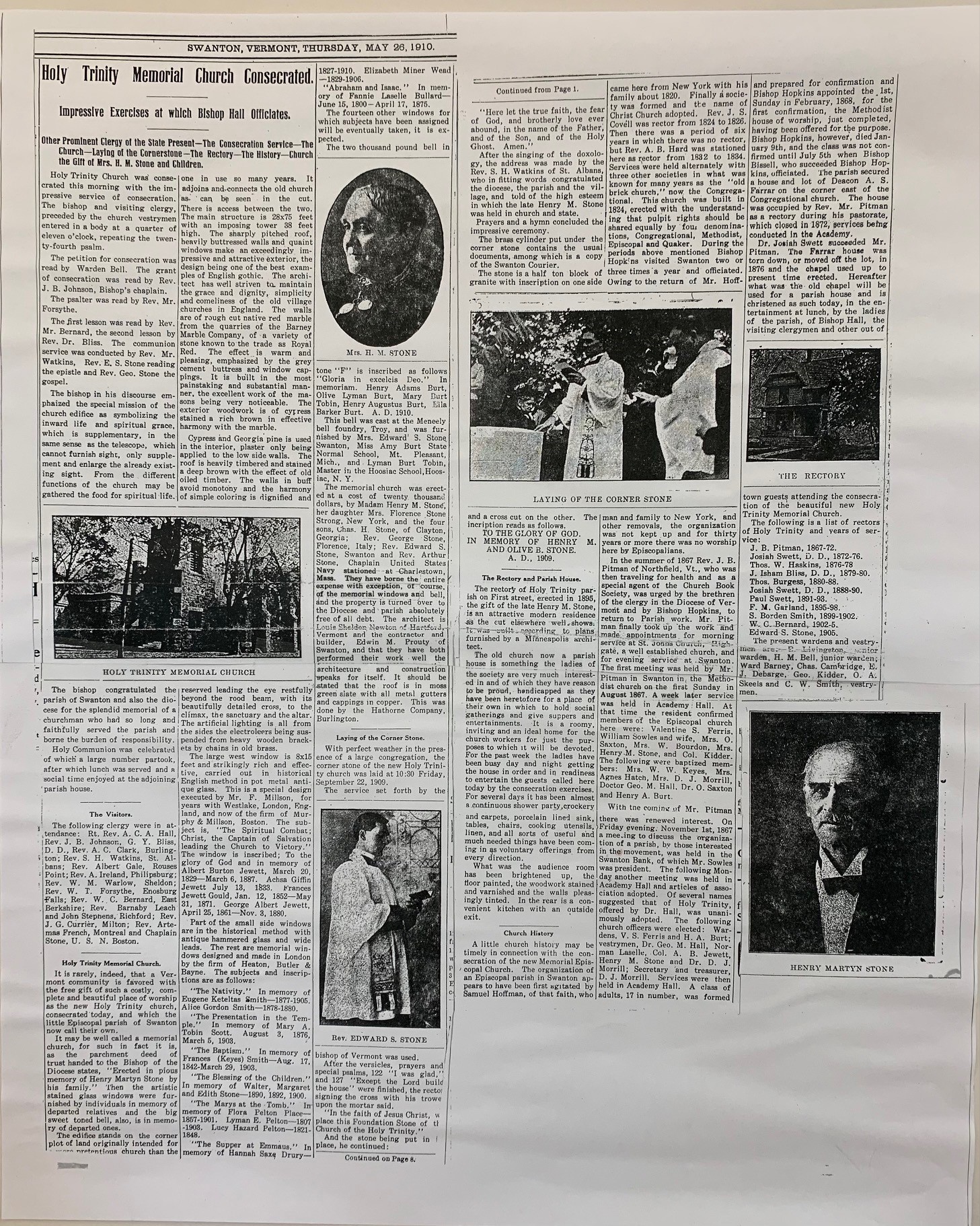 |
In the 1930s, the 46 First Street rectory was sold and 39 York was purchased for a larger rectory. The Rev. Alan Bragg became rector in 1962, after a missionary career in Africa (where he adopted his son Peter, the son of a tribal chief who wanted a better life for him in America), and retired in May 1973. During his rectorship the original pews, which had also served in the first church, were replaced, and red carpet was installed. The credence table was placed in the chancel, as well as the ambry of white Vermont marble matching the altar. New lighting fixtures, the gift of the late Bishop Quimby, a summer resident, were installed in the nave. |
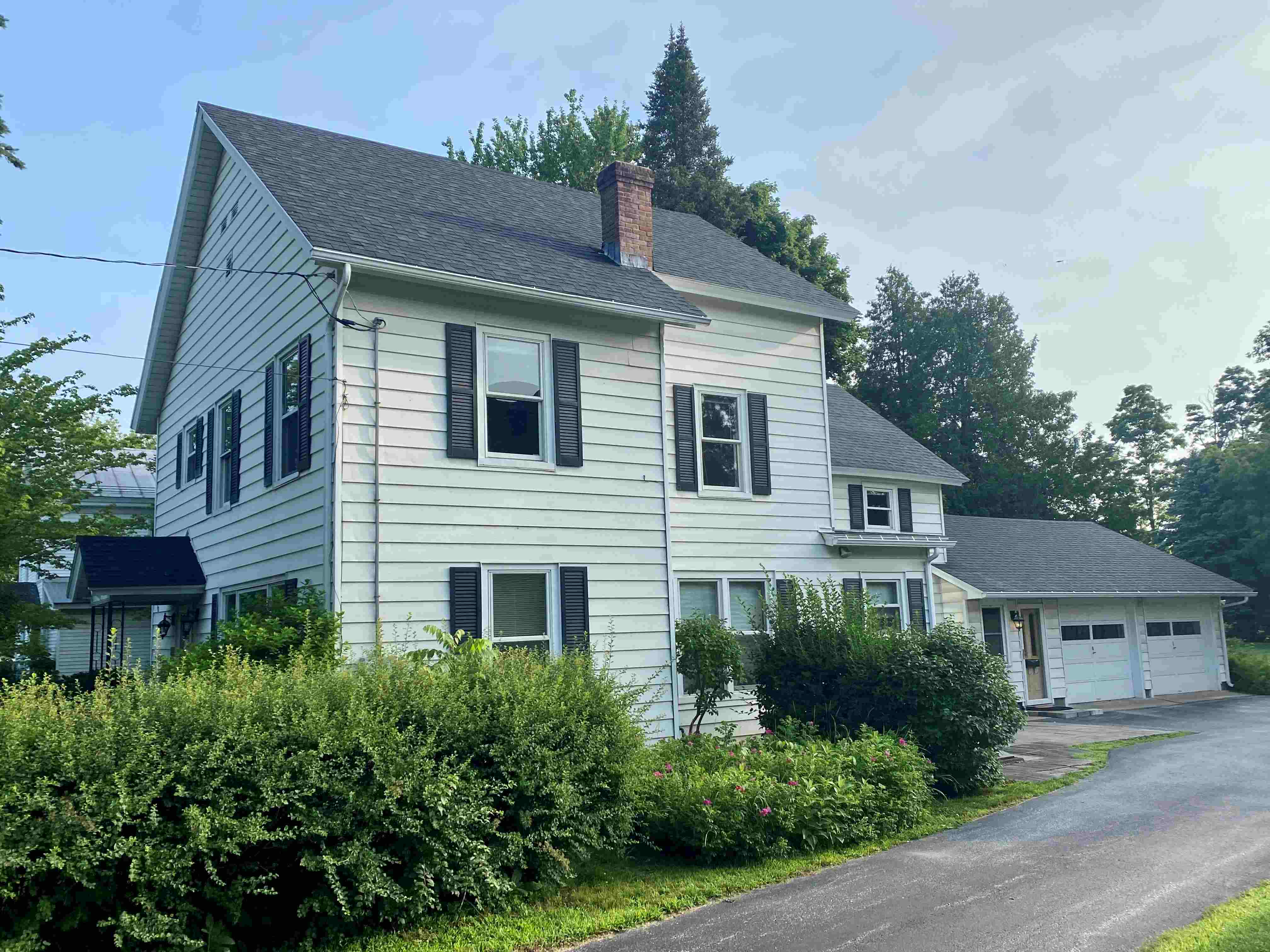 |
Mutual Ministry Beginnings - Chase, Kelsey, Comeau Era
In June 1973, the Rev. Benjamin O. Chase, formerly a US Navy Chaplain, became rector of Holy Trinity, St. John's in Highgate Falls, and St. Luke's in Alburgh, a three-congregation yoke. After attracting many young people, expanding lay ministries, and growing the parish, he resigned in February 1978. In August 1978, the Rev. James A. Kelsey, freshly graduated from General Seminary in New York, became rector. He continued and expanded the programs so successfully initiated by his predecessor, and the parish continued to grow under his guidance. After forming Holy Trinity and the Northwest Missions (an expanded four-congregation lay-led mutual ministry cluster) by including Grace in Sheldon, he conducted his final Eucharist at Holy Trinity on May 12, 1985. Molly Comeau had been raised up by the parish, studied for years, and served as a voluntary assistant to Fr. Kelsey, who was her mentor. She read for orders and was ordained a deacon and eventually a priest. Upon Fr. Kelsey's departure, she became the unanimous choice of the parish to become its next rector. Comeau was the first female Episcopal rector in Franklin County, and the first woman to preside as full-time rector of any parish in Vermont. She resigned after a family tragedy in 1989. |
Northwest Vermont Confederation; Diocesan Cooperative Ministry
The Rev. Judson Pealer became rector in 1990, continuing the cluster ministry, which was finally expanded by Bishop MacLeod into a six-congregation confederation including St. Matthews' in Enosburg and St. Ann's in Richford. He shared duties and pulpits with the Rev. Brad Clark. Unfortunately, the effort was short-lived, with both priests resigning and moving away in 1993. In 1994 the Rev. Evelyn Manzella became the next full-time rector, serving Holy Trinity and St. John's exclusively. In 1997 she received a call to Wooster, Ohio, home of Wooster College. During Manzella's tenure, Normand Lavallee of Highgate Center, the last member of St. John's Episcopal Church, began an active summer music program and opened St. John's as a picturesque Vermont village wedding venue.
In 1998 the Diocese arranged a shared three-year position, the Rev. Marsha Hoecker becoming our half-time rector and half-time Canon for Youth Ministry for the Diocese. She organized and led youth trips to the National Cathedral and the outdoor Cathedral in Boston, and arranged Northwest Deanery trips to Montreal, visiting the Anglican Cathedral, the Catholic Cathedral in Old Montreal, and St. John's Basilica of Montreal. Despite these successes, as her contract was coming to an end, a reduction to a quarter-time rector was strongly advised at the 2001 January annual meeting for our next priestly leadership. Another major issue at that meeting was the repair of the Resurrection Window facing the Swanton Village Green, which had been smashed by a sledgehammer on election night 2000. This act symbolized the antipathy for Vermont Civil Unions, an effort for justice toward same-sex couples, which Holy Trinity and Hoecker strongly supported. |
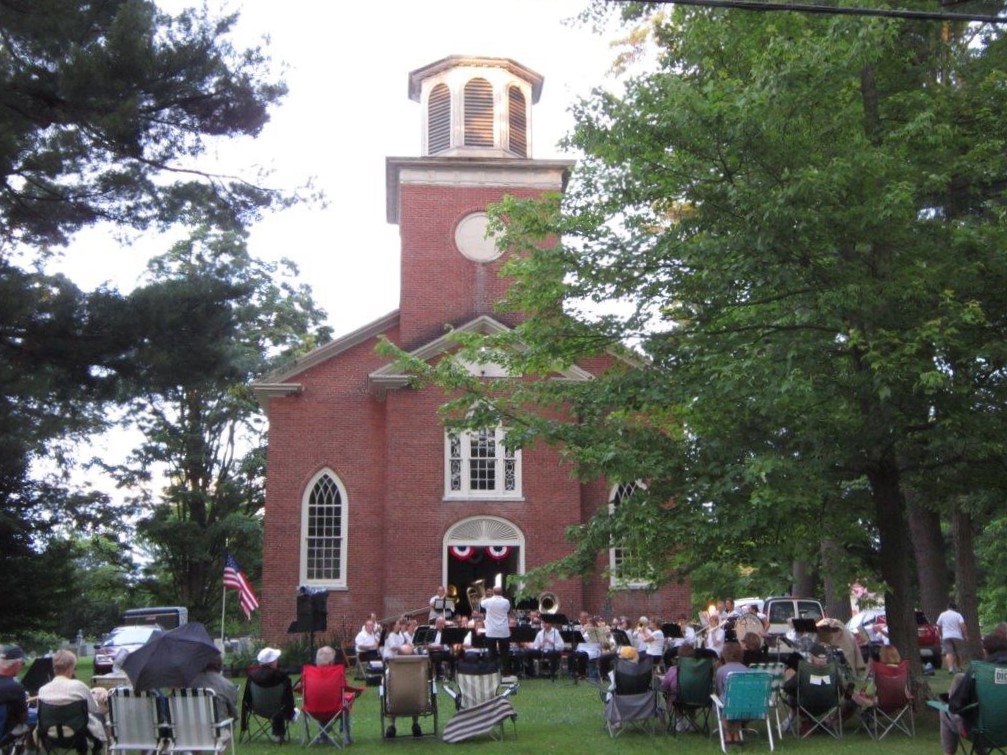 |
The Perry Bequest
A second benefactor, Harold Arthur Perry, died May 2, 2001, bequeathing his estate worth more than $8.3 million to the Trustees of the Episcopal Diocese of Vermont. In memory of his mother Cora, who died in 1970, Perry's bequest established the Cora E. Perry Memorial Fund "for the stablishment and beautification of Holy Trinity Episcopal Church, Swanton". They had lived together and attended Holy Trinity regularly, but he never returned after her funeral. Holy Trinity's members met frequently for months, sitting in a large circle in the parish hall, to discern the church's future call and vision. A prolonged consultation with a team from the Consortium of Endowed Episcopal Parishes informed them about the life-changing future lying before such a small parish receiving a tremendous bequest. A vision developed to use the dividends for three main purposes: operations, outreach, and building a parish hall facility, which could serve as a safe meeting place for the Swanton community. A full-time parish coordinator and a part-time assistant position were established. The Rev. Reid Farrell became rector beginning on June 6, 2004 (Trinity Sunday). Being an openly gay priest in a committed relationship, his installation on October 20, 2004, immediately followed his and his partner Dale's civil union ceremony at St. John's Episcopal Church, presided over by the Rt. Rev. Thomas Ely, Bishop of Vermont. |
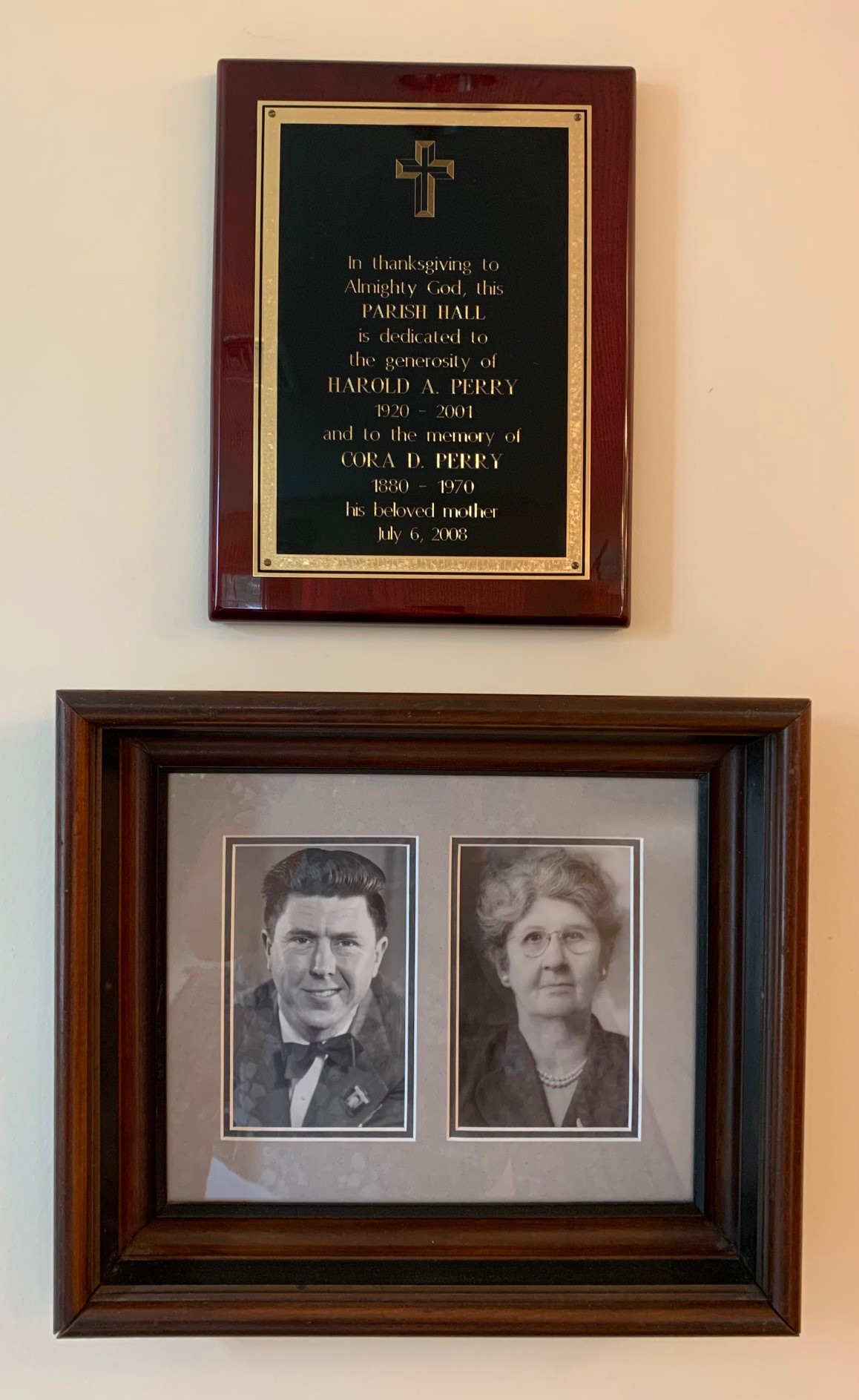 |
Designing and implementing our vision remained daunting and prolonged, as vague property lines were collegially defined with our neighbors the Swanton Christian Church, attorney offices of Ned Spear, J.D., and the Village of Swanton; the original rectory so long ago sold was purchased from its present owner, Ned Spear, J.D. Several versions of the design of the campus facilities with full modeling were presented and modified by the whole congregation; finally a multi-phase construction plan financed with a loan from the Perry fund including a new 3-level parish hall, renovations to the original rectory repurchased in 2006, renovations and reorganization of the altar, sanctuary, choir, organ and nave of the church, and renovations for St. John's Church in Highgate Falls, so it could become an active year-round liturgical space during the construction and renovation period. |
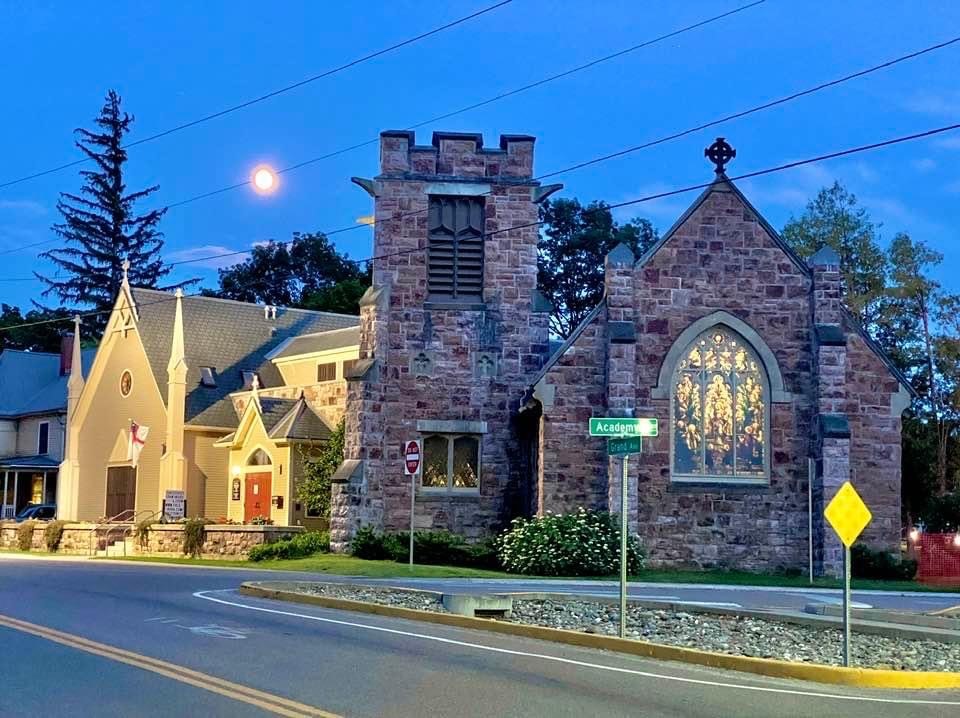 |
Multiple new outreach initiatives were begun, including an "Open Door Dinner" (monthly free meal for the Swanton community, hosted in turn by the Methodist, the Catholic, and Holy Trinity congregations), a weeklong summer Bible-themed cooking camp for elementary-aged children, a community Thanksgiving dinner, a scholarship program for graduating MVU seniors, sponsorship of a student at My Little Roses School in Honduras, and a historic designation event on June 27, 2013 of the Henry Erben Organ (ca 1837) at St. John's, Highgate Falls by the Organ Historical Society. |
Recent Years
Fr. Farrell announced his retirement on May 9, 2013 and celebrated his last liturgy with us on Labor Day Sunday, 2013. After a 20-month discernment and calling process, including two interim rectorships, the Rev. John Robert Spainhour became rector. May, June, July, and August 2017 were celebratory months for Holy Trinity members commemorating its 150th anniversary. A final festive event took place on August 4, 2017, including a joyous Eucharist service celebrated by Bishop Ely and a reception welcoming back previous rectors Ben Chase, Molly Comeau, Judson Pealer, and Marsha Hoecker. Another bequest from the estate of Andre Gagne was equally distributed to Holy Trinity, Memorial United Methodist, and Church of the Nativity Catholic congregations for the welfare of the Swanton community.
An 80-niche columbarium was installed in the bell tower entry and blessed by Bishop Ely on Trinity Sunday 2019. |
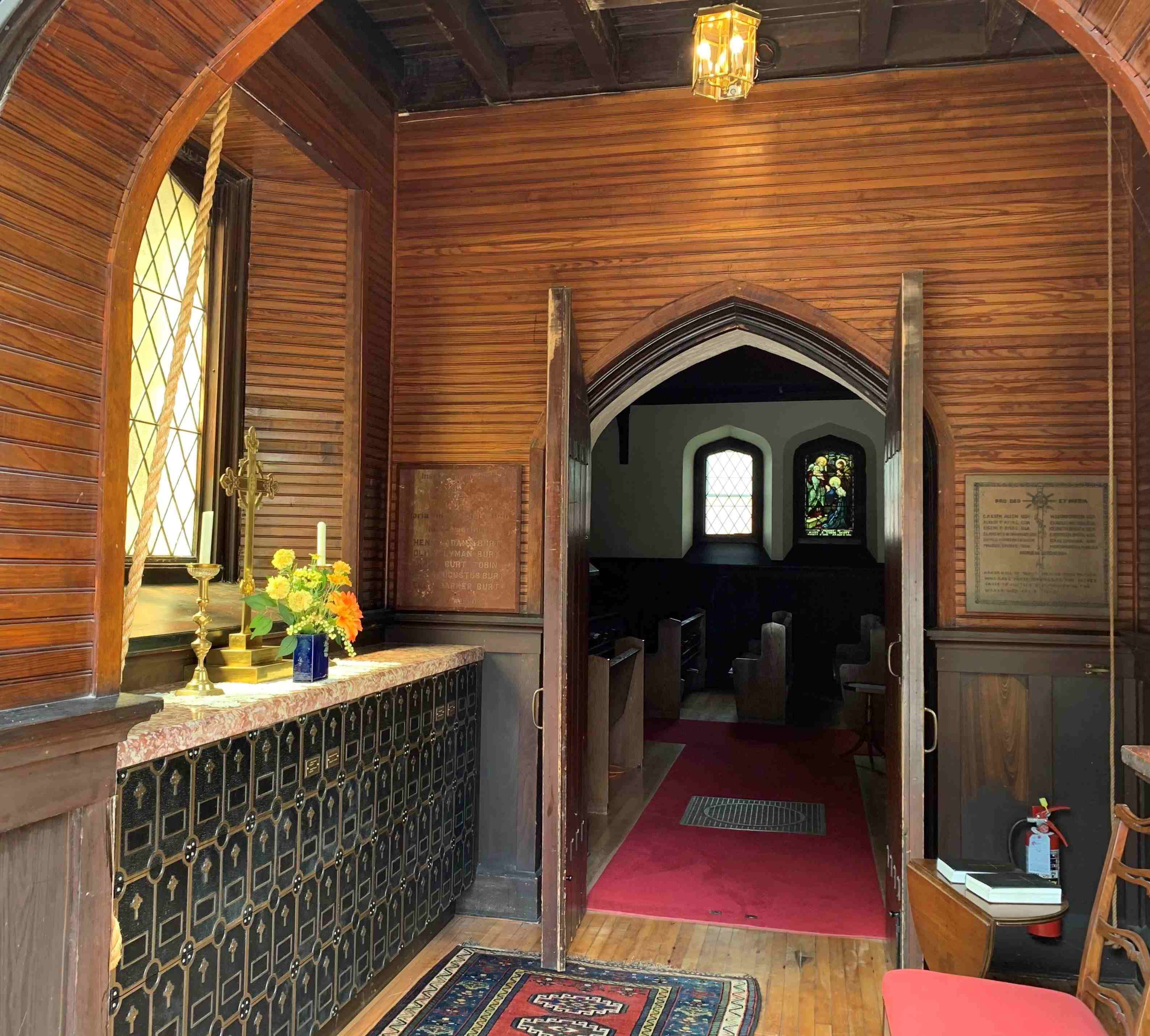 |
The estate of Mary Sheldon donated her home and $350K Union Bank stock to Holy Trinity for its or another non-profit organization's use and preservation, and is currently being considered for transfer to a non-profit as a low-income single family home.
Holy Trinity honored long-time parishioner Bonnie Fournier with a celebration of her life and dedication of the kitchen in her memory.
The Covid-19 pandemic diocesan "Restart Committee" required a full stop to all in-person congregational gatherings, but initiated electronic internet-based [Zoom] non-Eucharist worship services from March 2020 to July 2021. Experiments with outdoor safe-spaced services were followed by a phased return to a single 10 AM in-person worship service, eventually incorporating various Eucharist options. Spainhour announced his retirement at the 2023 annual meeting and departed at the end of February. |
|

